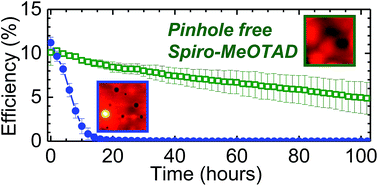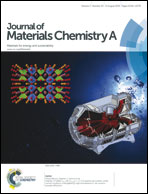Pinhole-free hole transport layers significantly improve the stability of MAPbI3-based perovskite solar cells under operating conditions†
Abstract
Pinhole-free 2,2′,7,7′-tetrakis(N,N-di-p-methoxyphenylamine)-9,9′-spirobifluorene (spiro-MeOTAD) hole transport layers (HTLs) were deposited on perovskite films. MAPbI3-based perovskite solar cells employing the pinhole-free HTL showed a prolonged lifetime under one sun and was operated at the maximum power point. The solar cell architecture (planar versus mesoporous-layers) was also observed to strongly influence the cell's stability.


 Please wait while we load your content...
Please wait while we load your content...